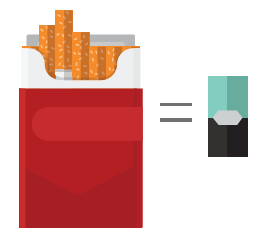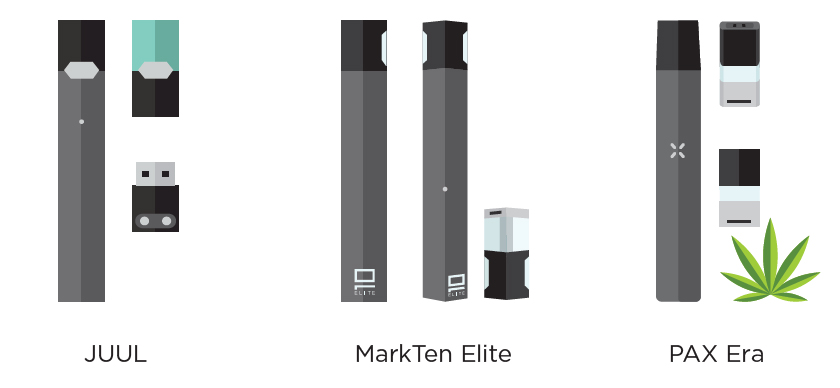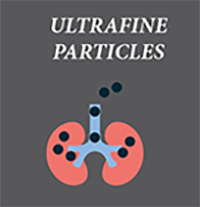E-cigarettes Shaped Like USB Flash Drives: Information for Parents, Educators and Health Care Providers
Electronic cigarettes (e-cigarettes) are battery-powered devices that can deliver nicotine and flavorings to the user in the form of an aerosol. E-cigarettes come in many shapes and sizes.

WHAT’S THE BOTTOM LINE?




AN INCREASINGLY POPULAR E-CIGARETTE DEVICE, CALLED JUUL,
IS SHAPED LIKE A USB FLASH DRIVE.


JUUL’s nicotine liquid refills are called “pods.” JUUL is available in several flavors such as Cool Cucumber, Fruit Medley, Mango, and Mint.

All JUUL e-cigarettes have a high level of nicotine. According to the manufacturer, a single JUUL pod contains as much nicotine as a pack of 20 regular cigarettes.

JUUL became available for sale in the United States in 2015. As of December 2017, JUUL is the top-selling e-cigarette brand in the United States.
News outlets and social media sites report widespread use of JUUL by students in schools, including in classrooms and bathrooms.
Other devices are becoming available that look like USB flash drives. Examples include the MarkTen Elite, a nicotine delivery device, and the PAX Era, a marijuana delivery device that looks like JUUL.

E-CIGARETTE USE IS NOT SAFE FOR YOUNG PEOPLE.
E-cigarette aerosol is not harmless. It can contain harmful ingredients. However, e-cigarette aerosol generally contains fewer harmful chemicals than smoke from burned tobacco products, like regular cigarettes.
Most e-cigarettes contain nicotine, which is highly addictive and can harm brain development, which continues until about age 25.

Young people who use e-cigarettes may be more likely to go on to use regular cigarettes.

PARENTS, EDUCATORS, AND HEALTH CARE PROVIDERS CAN HELP PREVENT AND REDUCE THE USE OF E-CIGARETTES BY YOUNG PEOPLE.

PARENTS CAN:
- Learn about the different shapes and types of e-cigarettes and the risks of all forms of e-cigarette use for young people.
- Talk to their children about the risks of e-cigarette use among young people. Express firm expectations that their children remain tobacco-free.
- Set a positive example by being tobacco-free.

EDUCATORS CAN:
- Learn about the different shapes and types of e-cigarettes and the risks of all forms of e-cigarette use for young people.
- Develop, implement, and enforce tobacco-free school policies.
- Reject youth tobacco prevention programs sponsored by the tobacco industry. These programs have been found to be ineffective for preventing youth tobacco use.

PEDIATRIC HEALTH CARE PROVIDERS CAN:
-
Ask about e-cigarettes, including devices shaped like USB flash drives, when screening patients for the use of any tobacco products.
-
Warn patients about the risks of all forms of tobacco product use, including e-cigarettes, for young people.









